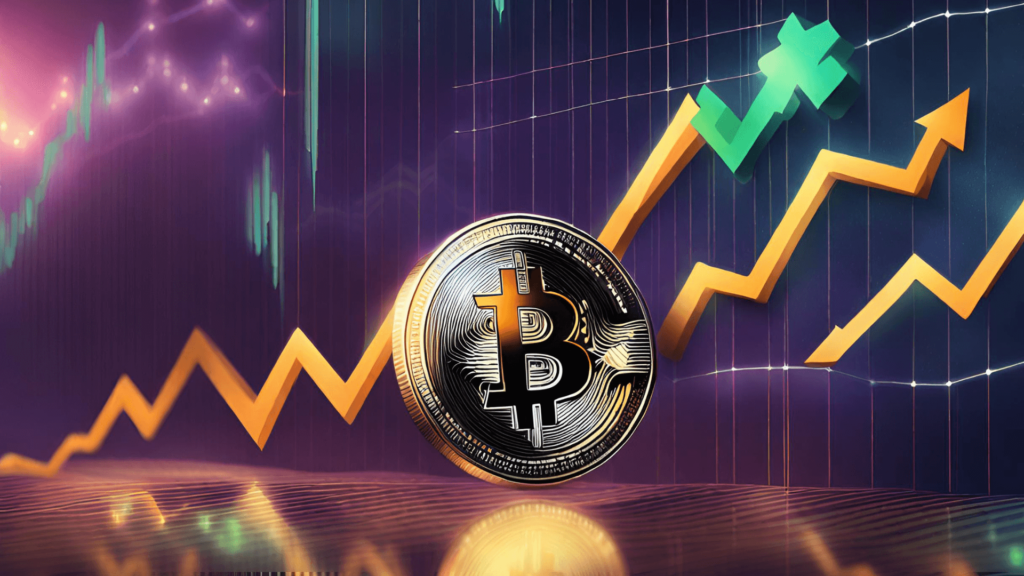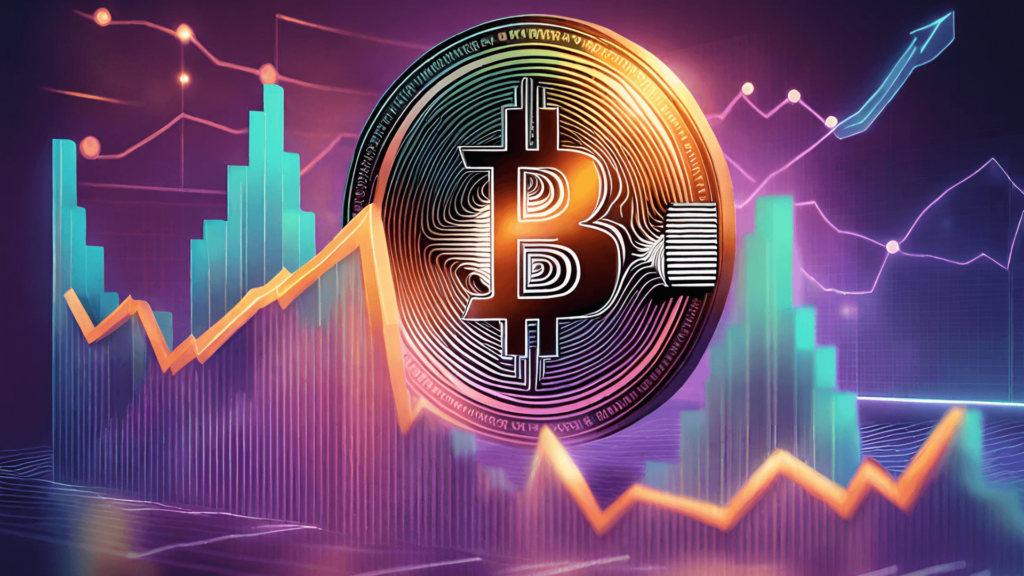The Link Between Interest Rates and Cryptocurrency Prices

Exploring the Relationship Between Interest Rates and Cryptocurrency Prices
Understand the basics
The Link Between Interest Rates and Cryptocurrency Prices | Interest rates and cryptocurrency prices are two keys to the global financial landscape. While interest rates refer to the cost of borrowing money or the return on savings, cryptocurrency prices represent the value of digital assets in the decentralized world of virtual currencies. Understanding the relationship between these two variables can provide valuable information for investors and market participants.
Importance of the topic
As cryptocurrencies continue to gain prominence in the financial industry, it is crucial to explore the factors that influence their prices. Interest rates have a significant impact on various investment assets, and the link between interest rates and cryptocurrency prices could shed light on the behavior of digital currencies within the broader economic context.
Objectives of the article
This article aims to delve deeper into the intricate relationship between interest rates and cryptocurrency prices. By examining the factors that influence both variables and analyzing case studies, we seek to highlight the impact of interest rates on cryptocurrency markets. Additionally, we aim to offer key takeaways for investors and market participants, along with implications for future research.
An Overview of Interest Rates and Cryptocurrency Prices

Market sentiment and speculation.
One of the main factors influencing cryptocurrency prices is market sentiment. Sentiment refers to the general sentiment or mood of market participants towards a particular asset or market. Positive sentiment can boost demand and subsequently increase prices, while negative sentiment can lead to sell-offs and falling prices. Speculation, driven by sentiment, can also play an important role in cryptocurrency price movements.
Regulatory environment and government policies
The regulatory environment surrounding cryptocurrencies and government policies can greatly affect their prices. Uncertainty regarding unfavorable regulations or policies can create a feeling of instability, leading to price volatility. On the contrary, favorable regulations and supportive policies can promote confidence and attract investors, which could drive up prices.
Technological advances and security concerns
Technological advancements and security concerns are crucial factors influencing cryptocurrency prices. Improvements in blockchain technology or the development of new features can improve the utility of digital assets, thereby increasing demand and potentially driving up prices. Conversely, security concerns, such as hacking incidents or vulnerabilities, can undermine investor confidence and lead to price declines.
Factors Influencing Cryptocurrency Prices

Market sentiment and speculation
One of the main factors influencing cryptocurrency prices is market sentiment. Sentiment refers to the general sentiment or mood of market participants towards a particular asset or market. Positive sentiment can boost demand and subsequently increase prices, while negative sentiment can lead to sell-offs and falling prices. Speculation, driven by sentiment, can also play an important role in cryptocurrency price movements.
Regulatory environment and government policies
The regulatory environment surrounding cryptocurrencies and government policies can greatly affect their prices. Uncertainty regarding unfavorable regulations or policies can create a feeling of instability, leading to price volatility. On the contrary, favorable regulations and supportive policies can promote confidence and attract investors, which could drive up prices.
Technological advances and security concerns
Technological advancements and security concerns are crucial factors influencing cryptocurrency prices. Improvements in blockchain technology or the development of new functionality can improve the utility of digital assets, thereby increasing demand and potentially driving up prices. Conversely, security concerns, such as hacking incidents or vulnerabilities, can undermine investor confidence and lead to price declines.
The Impact of Interest Rates on Cryptocurrency Prices

Interest Rates and Investor Behavior
Relationship between Interest Rates and Risk Appetite
Interest rates can influence investor risk appetite, which, in turn, affects cryptocurrency prices. During periods of low interest rates, investors may be more inclined to seek higher returns in riskier assets like cryptocurrencies. Conversely, higher interest rates may incentivize investors to choose safer, interest-bearing investments, potentially reducing the demand for cryptocurrencies and impacting their prices.
Interplay of Interest Rates and Investor Confidence
Interest rates also impact investor confidence, playing a crucial role in determining consumers’ willingness to invest. Lower interest rates can boost confidence by indicating accommodative monetary policy, which encourages spending and investments. Conversely, higher interest rates can create uncertainty and dampen investor confidence, potentially leading to reduced demand for cryptocurrencies and affecting their prices.
Role of Interest Rates in Shaping Investment Strategies
Interest rates shape investment strategies across various asset classes, including cryptocurrencies. When interest rates are low, investors may employ strategies aimed at capitalizing on potential price increases in riskier assets like cryptocurrencies. On the other hand, when interest rates rise, investors may adopt strategies focused on preserving capital and seeking yield in more traditional assets, potentially impacting the demand and pricing dynamics of cryptocurrencies.
Macroeconomic Indicators and Interest Rates
Inflation and Interest Rates
Inflation, as a macroeconomic indicator, can significantly impact interest rates. Central banks often raise interest rates to combat rising inflation, reducing the purchasing power of money and promoting stability. Higher interest rates due to inflation can affect the demand for cryptocurrencies, as investors might seek assets that can act as a hedge against inflation.
GDP Growth and Interest Rates
Gross Domestic Product (GDP) growth rates also have a strong correlation with interest rates. Central banks may raise interest rates to cool down an overheating economy or lower rates to stimulate economic growth. These changes in interest rates can have ripple effects on investment decisions and the demand for cryptocurrencies, ultimately influencing their prices.
Central Bank Actions and Interest Rate Policies
Central banks have the power to adjust interest rates through monetary policy decisions. These actions can have a profound impact on the overall economy and financial markets, including the cryptocurrency market. Changes in interest rates initiated by central banks can influence investor sentiment, risk appetite, and investment strategies, thereby affecting the demand and pricing of cryptocurrencies.
Cross-Asset Analysis: Interest Rates and Traditional Investments
Stock Market Performance and Interest Rates
Interest rates have an impact on stock market performance. Low-interest-rate environments can lead to increased investor demand for equities, potentially resulting in stock market rallies. Conversely, rising interest rates can lead to a shift in investment preferences towards fixed income assets, potentially impacting stock market performance. These dynamics can indirectly influence the demand for cryptocurrencies, as investors rebalance their portfolios.
Bond Yields and Interest Rates
Bond yields, which are directly influenced by interest rates, play a significant role in investment decisions. When bond yields are low, investors may seek alternative investments, potentially including cryptocurrencies, in search of higher returns. Conversely, when bond yields rise, investors may reallocate their portfolios towards fixed income assets, reducing the demand for cryptocurrencies and potentially affecting their prices.
Real Estate and Interest Rates
Real estate is also influenced by interest rates. Low-interest-rate environments can stimulate demand for real estate investments, potentially leading to price appreciation. On the other hand, rising interest rates can dampen demand for real estate, potentially leading to a decline in prices. These dynamics in the real estate market can indirectly impact the demand and pricing of cryptocurrencies as investor preferences shift.
Case Studies: Interest Rates and Cryptocurrency Price Movements

High Interest Rates and Cryptocurrency Markets
Historical Analysis of Crypto Bull Runs and High Interest Rates
Several historical instances have demonstrated a correlation between crypto bull runs and high interest rates. During periods of higher interest rates, investors seeking alternatives to traditional assets may have turned to cryptocurrencies, driving up their prices. For example, the bull run experienced in the late 2017 period coincided with increasing interest rates in some economies, supporting the notion of a positive relationship between high interest rates and cryptocurrency price movements.
Evidence from Emerging Economies with High Interest Rates
Emerging economies with high-interest-rate environments have also witnessed significant cryptocurrency price movements. In countries where interest rates are relatively high, investors may flock to cryptocurrencies as an alternative investment, potentially driving up their prices. This phenomenon highlights the influence of interest rates on cryptocurrency markets beyond well-established economies.
Impact of Central Bank Rate Decisions on Cryptocurrency Prices
Central bank rate decisions can have a direct impact on the pricing of cryptocurrencies. When central banks increase interest rates, it can lead to a decrease in the demand for cryptocurrencies, potentially resulting in price declines. Conversely, accommodative monetary policies with low-interest rates can fuel interest in cryptocurrencies, potentially leading to price increases.
Low Interest Rates and Cryptocurrency Markets
Link between Accommodative Monetary Policies and Cryptocurrency Prices
Accommodative monetary policies, characterized by low-interest-rate environments, have been associated with increased demand for cryptocurrencies. With lower interest rates, investors may seek riskier investments like cryptocurrencies in the pursuit of higher returns. Consequently, low-interest-rate environments can contribute to increased cryptocurrency adoption and potentially drive up their prices.
Examples of Global Low Interest Rate Environments and Crypto Adoption
Several examples from around the world signify the correlation between low-interest-rate environments and cryptocurrency adoption. Countries and regions with lower interest rates and loose monetary policies have witnessed increased cryptocurrency usage and market activity. This pattern highlights the role of interest rates in shaping investor preferences and the potential impact on cryptocurrency prices.
Unconventional Monetary Policies and the Rise of Cryptocurrencies
Unconventional monetary policies, such as quantitative easing, have also played a role in the rise of cryptocurrencies. These policies, implemented by central banks to stimulate the economy during times of crisis, can lead to lower interest rates and increased money supply. This environment of loose monetary policy can contribute to increased interest in cryptocurrencies and potentially drive up their prices.
Interest Rate Volatility and Cryptocurrency Prices
Influence of Interest Rate Uncertainty on Crypto Markets
Interest rate uncertainty can create volatility in the cryptocurrency markets. When central banks signal potential changes in interest rates or adopt a more uncertain stance, it can lead to price fluctuations and market instability. The uncertainty surrounding interest rates can significantly impact investor sentiment and the demand for cryptocurrencies, leading to price movements.
Comparative Analysis of Rate Volatility and Crypto Marketatility
Comparatively, interest rate volatility can affect the broader financial markets, including cryptocurrencies. Sharp changes in interest rates can lead to increased market volatility, creating ripple effect on investor sentiment across various asset classes. Consequently, the volatility in interest rates can influence the pricing dynamics and demand for cryptocurrencies.
Strategies for Crypto Investors during Periods of Interest Rate Volatility
During periods of interest rate volatility, crypto investors may consider implementing specific strategies. These may include diversifying their portfolios with traditional assets that can act as a hedge against interest rate fluctuations. Additionally, staying informed about central bank actions and monetary policy decisions can help investors navigate the impact of interest rates on the cryptocurrency markets.
Summary and Conclusion
Recap of the Link Between Interest Rates and Cryptocurrency Prices
In summary, interest rates can exert a significant influence on the prices of cryptocurrencies. The relationship between interest rates and investor behavior, coupled with the impact of macroeconomic indicators, shapes the demand for digital assets. Additionally, the case studies of high and low-interest-rate environments highlight the direct and indirect effects of interest rates on cryptocurrency markets.
Key Takeaways for Investors and Market Participants
1. Interest rates can impact the demand for cryptocurrencies based on investor risk appetite and confidence levels.
2. Macroeconomic indicators, such as inflation and GDP growth, can influence interest rates and subsequently impact cryptocurrency prices.
3. Cross-asset analysis reveals the interconnectivity between interest rates and traditional investments, indirectly impacting cryptocurrency markets.
4. Case studies indicate both positive and negative associations between interest rates and cryptocurrency price movements.
5. Interest rate volatility can contribute to market fluctuations and affect investor sentiment towards cryptocurrencies.
Future Implications and Areas for Further Research
The relationship between interest rates and cryptocurrency prices presents avenues for further research. Exploring the impact of specific interest rate policies, the role of sentiment analysis, or the influence of interest rate derivatives on the crypto markets can provide deeper insights. Additionally, analyzing the long-term implications of interest rate changes and their effects on cryptocurrency adoption and market behavior can help anticipate future trends.
Investors and market participants should remain mindful of the complex interaction between interest rates and cryptocurrency prices, as developments in these areas can significantly impact investment decisions and portfolio strategies.
**FAQs**
1. How do interest rates affect cryptocurrency prices?
Interest rates can influence cryptocurrency prices through their impact on investor behavior and demand for alternative assets. Lower interest rates may incentivize investors to seek higher returns in riskier assets like cryptocurrencies, potentially increasing their prices.
2. Can the relationship between interest rates and cryptocurrency prices be predicted?
Predicting the relationship between interest rates and cryptocurrency prices with accuracy is challenging due to the numerous variables involved. However, studying historical patterns, macroeconomic indicators, and investor behavior can provide insights into potential correlations.
\
3. Are interest rates the only factor influencing cryptocurrency markets?
No, interest rates are just one of many factors influencing cryptocurrency markets. Other crucial factors include market sentiment, regulatory environment, technological advancements, security concerns, and investor speculation.
4. Should I consider interest rate changes while investing in cryptocurrencies?
Yes, considering interest rate changes is important when investing in cryptocurrencies, as they can impact investor behavior and market sentiment. However, it is crucial to analyze a comprehensive range of factors that influence cryptocurrency markets before making investment decisions.
5. How can central bank policies impact the volatility of cryptocurrency prices?
Central bank policies, including interest rate decisions, can impact the volatility of cryptocurrency prices by creating uncertainty and influencing investor sentiment. Changes in central bank policies may lead to fluctuations in cryptocurrency markets as investors react to these decisions.
The Link Between Interest Rates and Cryptocurrency Prices




